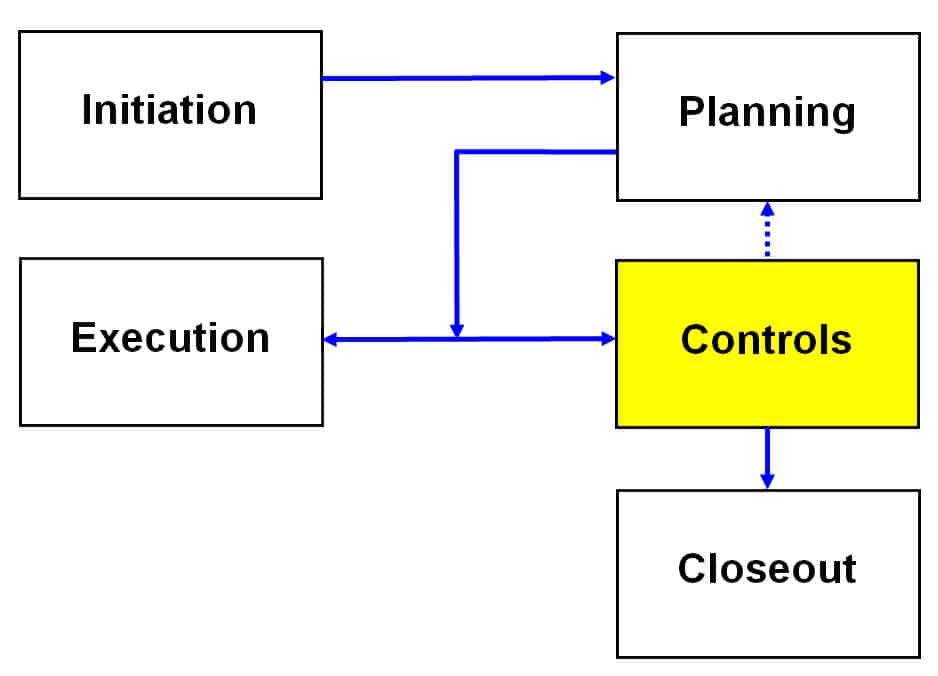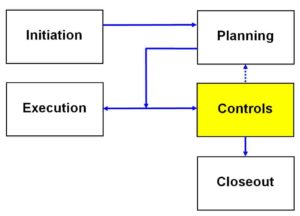Project Controls, Part 1 – Monitoring and Controlling Scope and Quality

This article presents ideas for monitoring and controlling project scope and quality.
Scope
Enforcing your project communications plan will go a long way to helping you control scope. Project team members who are doing the work cannot be allowed to have private discussions with other stakeholders without your knowledge.
- Provide task leaders, supervisors, technical experts, other team members with scope reminders (for each task and subtask).
- Compare work in progress to existing scope (ensure enough is done, but not too much).
Sometimes the performance of out of scope work originates within the project team. They can lose sight of the anticipated level of detail and quality, not seeing that what they believe is only 90 percent complete is already 100 percent of what the customer had in mind. If your assignments were explicit, in writing, and contained limits on how many hours to spend and a deadline, you should not experience many of these internal scope creep situations. Nonetheless, scope verification is an important part of your “management by walking around” routine.
- Control the customer, your superiors, project team members, and other stakeholders, to prevent uncompensated scope creep.
If necessary, identify and negotiate potential increases to project scope. If the customer and other stakeholders agree to an increase in scope, your next step is to recommend options and submit them with proposed revisions to the cost and the schedule for customer review and timely approval
Quality Assurance and Quality Control
- QA vs. QC.
Quality control (QC) is a subset of quality assurance (QA). QC is simply the activities that ensure conformance with specifications (peer review of documents; checking calculations and drawings for errors; inspections; tests; calibrations). QA is the entire set of activities (including QC) ensuring that deliverables meet or exceed customer expectations.
Embracing QA means the project team will establish and follow a process to ensure: a complete requirements analysis is conducted and documented with the various stakeholders; all other activities during project initiation and planning are reviewed; internal team members, external providers, and vendors are screened for best value as opposed to lowest cost; during execution, the project management plan is actually followed; project controls are correctly used as stated in the plan; identified deficiencies are subjected to a corrective action process; opportunities for continuous improvement are passed from the project team to upper management; and any quality audits required by the project management plan do occur.
- Build QA/QC into the project plan (graded approach).
After reading the details of QA/QC, the reader might be thinking no project could actually require these activities and be completed for a reasonable budget. Taking a graded approach to quality means, only plan and conduct quality activities to the degree necessary for your current project.
Consider the universe of possible quality activities, but only implement the measures necessary to ensure deliverables will meet or exceed customer expectations, based on: the size, complexity, and duration of the project; special risks identified for the project; and the costs (monetary and other) associated with failure.
- Assign and collect written peer review evaluations of calculations, technical content, documents, drawings, physical work products, etc.
- Procedures; training; verification.
Certain projects may require their own standard operating procedures (SOPs) be written. Other projects might require special training of team members. In either case, the quality plan should require some type of assurance (attendance records, certification of SOPs being read, or test records) that the applicable team members possess the specialized knowledge required by the project.
- When deficiencies are identified, develop corrective actions and follow up.
Root causes are underlying causes that an effective management team can identify, and create measures to prevent recurrences (what could we change to ensure this never happens again). Freezing weather is not a root cause of a concrete retaining wall failing to cure to specified strength.
Typical root causes are often related to training; proper equipment; content of SOPs. Corrective actions should identify root causes and specify the actions necessary to remedy the deficiency and prevent recurrences. Successful implementation of corrective actions should be verified and certified in writing by conducting a follow-up audit.
To support continuous improvement, corrective actions should be incorporated into training events, presenting the deficiency, root cause, remedy, and any relevant technical details. Relevant policies, plans, procedures, and/or other related documents, including the project QA plan should be updated to prevent recurrences.
- Conduct phased project reviews as major milestones are met before proceeding.
Phased project reviews might be appropriate at the completion of: a requirements analysis; a feasibility study; detailed design; contractor selection; completion of certain deliverables.
- The quality function should be independent
The quality assurance group is not part of the project team. Project team members can peer review the work of other team members, but quality oversight (the people who check to see the quality plan is being followed, and are available to hear quality-related concerns of team members) should be provided by others.
- The buck stops with the PM.
Never blame a quality failure on someone else (except when the person had malicious intent or was clearly negligent). You and you alone are responsible for ensuring an appropriate project quality plan is prepared and followed. If this is truly your attitude, you’ll work harder to avoid project deficiencies. Embrace deficiencies as an opportunity for improvement.
Next Article in This Series: The next article presents ideas for monitoring and controlling schedules and budgets.
Category: Business Growth & Strategy
Tags:


